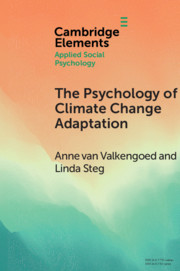Element contents
The Psychology of Climate Change Adaptation
Published online by Cambridge University Press: 04 May 2019
Summary
Keywords
- Type
- Element
- Information
- Online ISBN: 9781108595438Publisher: Cambridge University PressPrint publication: 30 May 2019
References
- 30
- Cited by



